Zero-Emission Transportation
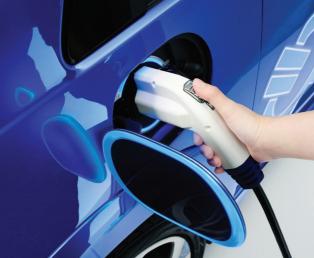 Each day thousands of cars, trucks and motorcycles operate on Madera County roadways. For many years the pollution from these vehicles has been the single greatest source of smog-forming emissions in the state, and a top contributor to climate-changing gases. Transitioning to vehicles able to operate as clean as possible is vital to reducing transportation pollution. Delivering healthy air to the region requires a move away from combustion powered vehicles and the widespread introduction of zero-emission cars, trucks, and equipment. The Madera County Transportation Commission has worked with local partners to plan for increased levels of Zero Emission Vehicle (ZEV) adoption throughout the Madera County region and surrounding areas.
Each day thousands of cars, trucks and motorcycles operate on Madera County roadways. For many years the pollution from these vehicles has been the single greatest source of smog-forming emissions in the state, and a top contributor to climate-changing gases. Transitioning to vehicles able to operate as clean as possible is vital to reducing transportation pollution. Delivering healthy air to the region requires a move away from combustion powered vehicles and the widespread introduction of zero-emission cars, trucks, and equipment. The Madera County Transportation Commission has worked with local partners to plan for increased levels of Zero Emission Vehicle (ZEV) adoption throughout the Madera County region and surrounding areas.
Zero-Emission Vehicle Readiness and Implementation Plan
This plan assesses the existing ZEV infrastructure environment, recommends infrastructure improvements and investments, identifies implementation strategies and policies to promote ZEV infrastructure adoption in the short- and long-term, identifies key community challenges and barriers to advancement, and provides stakeholders with tools to procure, site and install various ZEV infrastructure. This plan primarily addresses conventional ZEVs including battery electric vehicles (BEVs) and fuel cell electric vehicles (FCEVs).
Read the Madera County Zero-Emission Vehicle Readiness and Implementation Plan
ZEV PLANNING RESOURCES
Electric vehicles are in our communities today and more are coming. Madera County CTC is providing these resources to help residents, businesses, and local agencies plan for installing EV charging stations at home, at work, and at destinations.
Charging at Home: Resources for Residents
An EV can charge using a standard wall outlet and the cord that comes with the car.
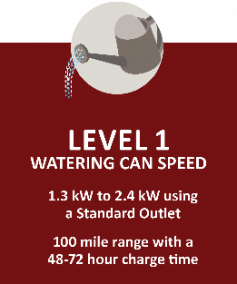 |
Level 1 is a slow charge, but can add 20 miles of range to the EV’s battery overnight. |
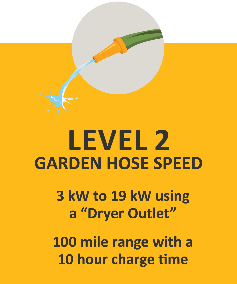 |
Level 2 charging can add up to 20 miles of range per hour of charging. Residents can install a 240-volt plug, similar to a dryer plug, or a piece of equipment commonly called an EVSE. The greater number of kilowatts (kW), the faster the charge. |
Visit the PG&E website to learn more about rebates and incentives for EVs and charging stations.
Rebates and Incentives for Residents
Public Charging: Resources for Employers, Businesses, Multifamily Properties, and Local Government
 |
Level 2 charging can add up to 20 miles of range per hour of charging and is ideal for locations at which drivers park for at least four hours—multifamily properties, workplaces, hotels, fleet yards, and entertainment venues. Multifamily with assigned parking space might consider a 240-volt plug, similar to a dryer plug. Other properties will choose a piece of equipment commonly called an EVSE. The greater number of kilowatts (kW), the faster the charge. “Smart” charging is an EVSE that is connected to a network and can accept payment, manage electricity flow, and report data. |
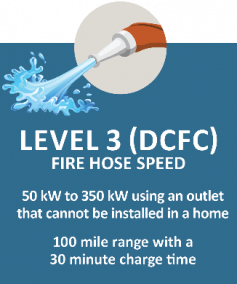 |
Level 3 DC Fast Charging can fill an empty battery in less than an hour and is ideal for locations at which drivers park for at least 20 minutes, but no more than an hour—restaurants, salons, grocery and retail stores, libraries, parks, and gyms. A DCFC is always a “smart” piece of equipment commonly called an EVSE. The greater number of kilowatts (kW), the faster the charge. Properties with large parking lots may install multiple DCFC to create a “charging plaza.” |
Rebates and Incentives for Public and Workplace Charging
- PG&E EV and Charging Station rebates
- EnergIIze (for trucks, buses, and off-road equipment only)
- CALeVIP (limited availability)
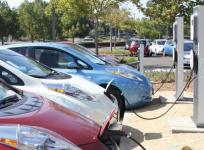 |
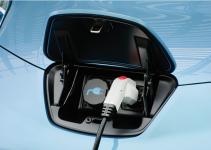 |
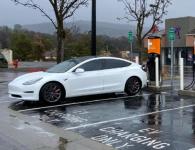 |
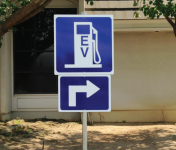 |
| Workplace Charging | Multifamily Charging | Retail and Restaurant Charging | Public Parking Charging |
|
Resources for business owners and managers, and business property managers that want to provide EV charging stations for employees, clients, and fleet vehicles. |
Resources for apartment, condo, and manufactured housing property owners and managers that want to provide EV charging stations for residents, guests, and employees. |
Resources for restaurants, stores, fitness centers, hotels, healthcare providers, and entertainment providers that want to provide EV charging stations in parking lots. |
Resources for local government, airports, parking lot operators, and others that want to provide EV charging stations in parking lots. |
 |
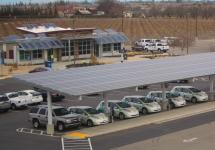 |
 |
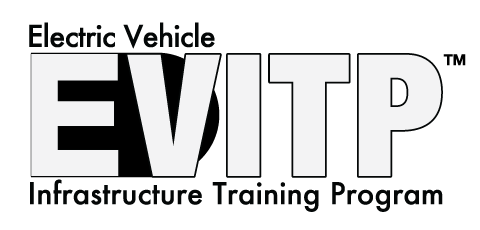 |
| Site Evaluation Tool | Fleet Inventory Tool | EV Station Permitting Resources | EVITP for Electricians |
|
A simple checklist to evaluate a site and a location on the site for an EV charging station. |
An Excel spreadsheet for fleet managers to collect information about their vehicles and facilities to plan for a transition to EVs. |
Information for local governments to implement streamlined permitting for EV charging stations. Permitting Electric Vehicle Charging Stations: Best Practices |
Information for journeyman electricians to become certified to install charging stations. The Electric Vehicle Infrastructure Training Program (EVITP) |
